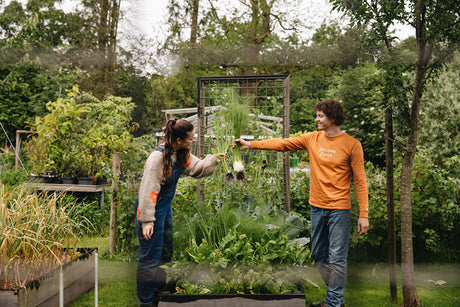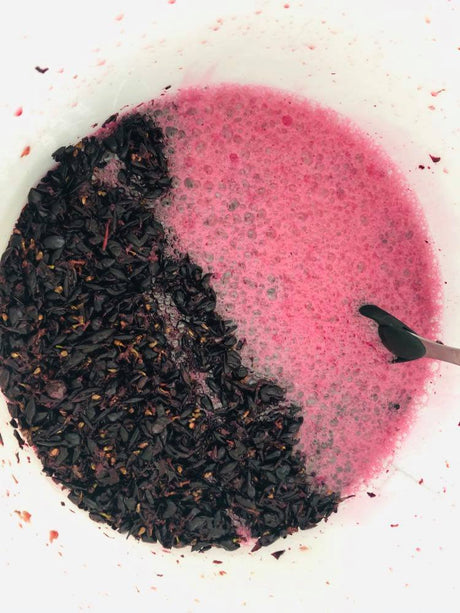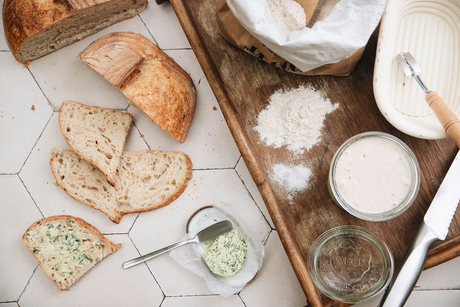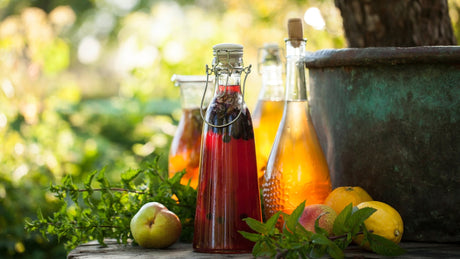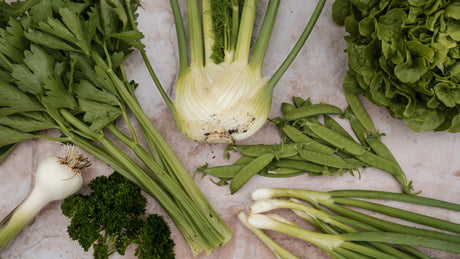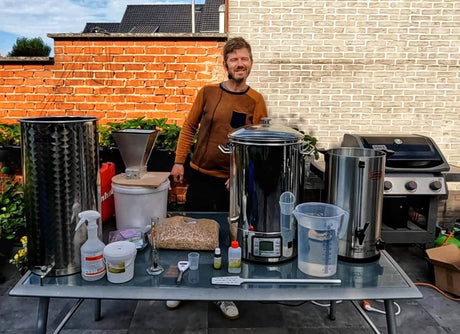“Pests in the vegetable garden..”
It's mid-June and we are all enjoying our beautiful garden, at least that's the idea.
After everything has been sown and harvested, there are still many complaints from the vegetable gardeners, plants that suddenly disappear,
beans that come above the ground and the next day they are lying on the ground with roots and all, but also
cucumber plants that suddenly disappear completely, cabbage plants that suddenly stand dead in the row and lettuce plants that suddenly turn into a dry plant that dies.
There is something everywhere and of course it often happens to all of us. But often on Facebook are the nice things and we would rather not post the bad things, but believe me, everyone has those problems or has had them at some point
had to deal with.
Snails for example, they can cause a lot of damage. A well-known garden plant, the Hosta, is known to attract many snails. But also in our neighbourhood vegetable garden we have to deal with snails that have eaten away all
the pumpkin plants, what remains is a shiny slippery trail, a sign that they were snails.
What can we do about it? Not much, I say, because all the stories about broken eggshells, coffee grounds, beer traps, spreading breadcrumbs etc. etc. do not really produce the desired result. Then you can still spread
slug pellets , various types such as ECO-style… which do not harm the plants, but do kill slugs, I feel like there is something in it…

I think hedgehogs eat a fair amount of snails and some birds too, but the hedgehogs need to be able to get into the garden, so a closed fence won't let hedgehogs in.
I once had an open garden somewhere in nature and never had snails. But now I see around me sometimes a plant disappear. So also the
pumpkin plant,
cucumber plant etc.
Then the
beans , it is better to put a net over them after sowing, high enough so that the plants can grow of course, because without a net crows, magpies, jays and wood pigeons will like to bother the vegetable gardener by pulling the young plants out of the ground, mainly because of the two half beans that are still on the plant, because they like them.
Rabbits, well they are in abundance this year and in our neighbourhood garden there are at least seven of them every day, which is a shame, because they eat quite a few young plants and to make matters worse, they have also made nests in the garden.

Now our neighbourhood garden is a garden on municipal land, consisting of a vegetable garden, raised vegetable
beds for neighbourhood residents, a picking garden, berry garden, bee corner,
pumpkin hill and wild garden. On municipal land you have to deal with municipal regulations and we are not allowed to catch rabbits and release them somewhere else, we are not actually allowed to do anything…
Moreover, half of the residents of the neighbourhood like the rabbits and the other half do not, because the gardens near the houses are also full of rabbits, because in addition to the seven in our neighbourhood garden, there are dozens more rabbits in the neighbourhood, they have no natural enemies here.

People quickly start shouting: trap cages, use ferrets etc. but that is not allowed, we should just accept them as friends in nature. What is possible is to stretch an electric wire around them, a kind of electric fence, that is the only thing that would be possible, but that is quite an expense for a community garden that runs on volunteers.
If you have your own garden, much more is allowed, often in consultation with the board of the allotment association. But do we want that? Opinions will be divided.
And the lettuce plants? You hear about the lettuce borer, a small worm that eats the root of the lettuce plant and bores through it, causing the plant to die. Often that is a single plant in the garden and not a whole row.
With cabbage you sometimes see multiple plants die, swellings grow on the root, which deforms the root and kills the plant. Clubroot is the name for this. It is said that a handful of
lime when planting, in the planting hole, would help, it often occurs on acidic soil, such as light sandy soils, it occurs less often on clay soil, because the pH is often higher there (acidity of the soil), others use cabbage collars, collars of cardboard or plastic that are placed around the plant.
Then we have the caterpillars of the cabbage white butterfly, catching them is the most natural option, the plants can simply continue to grow.
At this time of year, many vegetable gardeners are again suffering from Colorado beetles on their
potatoes . These are also best caught by hand, others say that runner ducks catch and eat them, and I think some birds do too...

The carrot fly lays its eggs at the roots of the plant, just above the ground, the young worms from this make tunnels in the root and we don't like that.
Insect netting around the bed of carrots works best, one meter high and just open at the top, works fine, those flies don't fly higher than 80cm anyway. Press the netting 10 cm into the ground.
Wireworms, another thing, occur in the vegetable garden and can really eat your
potatoes , those small hard orange-yellow-brown worms... sometimes you see them sticking out of the potato when harvesting. It was said that it has to do with potato fatigue, by planting potatoes too often on the same piece of land, well, that's not entirely true, I also had a lot of trouble last year with the late
potatoes , they were on land where
potatoes had never grown before, which had always been a meadow, but they remain a nuisance.
Then there are the crows, wood pigeons, magpies, etc. that destroy many plants, which means we have to use
nets to protect our plants.

And then sometimes we have voles, wasps on the strawberries and so on.
Of course, not every plant has to be perfect, recently someone pulled all
the turnip greens out of the ground and threw them on the
compost heap, because there were lots of little holes in the leaves… Well, that wasn’t necessary, because that happens a lot more often with
turnip greens , it can’t do any harm at all, this is nature too. Hopefully we all stay away from the pests in the garden as much as possible, but they are part of it, if you sow something you can expect it to attract creatures from nature. Sometimes annoying ones, but sometimes also good ones.

Just look at how many lice there are this year, a plague you might think, but that also means a lot of
ladybirds , because they eat the lice again.
So we often keep complaining, but fight in a natural way and do not make yourself sick with all kinds of poisonous remedies, which are also bad for everything that lives. And which are also not healthy for yourself.
Nettle manure can be a solution for caterpillars, for example, anything is better than the wrong means. I am also not a fan of a soap solution with alcohol, but that is up to you. It is an old remedy that was used in earlier years, but is it also healthy?
Let's keep gardening fun and healthy!
Wim Boers.
 I think hedgehogs eat a fair amount of snails and some birds too, but the hedgehogs need to be able to get into the garden, so a closed fence won't let hedgehogs in.
I once had an open garden somewhere in nature and never had snails. But now I see around me sometimes a plant disappear. So also the pumpkin plant, cucumber plant etc.
Then the beans , it is better to put a net over them after sowing, high enough so that the plants can grow of course, because without a net crows, magpies, jays and wood pigeons will like to bother the vegetable gardener by pulling the young plants out of the ground, mainly because of the two half beans that are still on the plant, because they like them.
Rabbits, well they are in abundance this year and in our neighbourhood garden there are at least seven of them every day, which is a shame, because they eat quite a few young plants and to make matters worse, they have also made nests in the garden.
I think hedgehogs eat a fair amount of snails and some birds too, but the hedgehogs need to be able to get into the garden, so a closed fence won't let hedgehogs in.
I once had an open garden somewhere in nature and never had snails. But now I see around me sometimes a plant disappear. So also the pumpkin plant, cucumber plant etc.
Then the beans , it is better to put a net over them after sowing, high enough so that the plants can grow of course, because without a net crows, magpies, jays and wood pigeons will like to bother the vegetable gardener by pulling the young plants out of the ground, mainly because of the two half beans that are still on the plant, because they like them.
Rabbits, well they are in abundance this year and in our neighbourhood garden there are at least seven of them every day, which is a shame, because they eat quite a few young plants and to make matters worse, they have also made nests in the garden.
 Now our neighbourhood garden is a garden on municipal land, consisting of a vegetable garden, raised vegetable beds for neighbourhood residents, a picking garden, berry garden, bee corner, pumpkin hill and wild garden. On municipal land you have to deal with municipal regulations and we are not allowed to catch rabbits and release them somewhere else, we are not actually allowed to do anything…
Moreover, half of the residents of the neighbourhood like the rabbits and the other half do not, because the gardens near the houses are also full of rabbits, because in addition to the seven in our neighbourhood garden, there are dozens more rabbits in the neighbourhood, they have no natural enemies here.
Now our neighbourhood garden is a garden on municipal land, consisting of a vegetable garden, raised vegetable beds for neighbourhood residents, a picking garden, berry garden, bee corner, pumpkin hill and wild garden. On municipal land you have to deal with municipal regulations and we are not allowed to catch rabbits and release them somewhere else, we are not actually allowed to do anything…
Moreover, half of the residents of the neighbourhood like the rabbits and the other half do not, because the gardens near the houses are also full of rabbits, because in addition to the seven in our neighbourhood garden, there are dozens more rabbits in the neighbourhood, they have no natural enemies here.
 People quickly start shouting: trap cages, use ferrets etc. but that is not allowed, we should just accept them as friends in nature. What is possible is to stretch an electric wire around them, a kind of electric fence, that is the only thing that would be possible, but that is quite an expense for a community garden that runs on volunteers.
If you have your own garden, much more is allowed, often in consultation with the board of the allotment association. But do we want that? Opinions will be divided.
And the lettuce plants? You hear about the lettuce borer, a small worm that eats the root of the lettuce plant and bores through it, causing the plant to die. Often that is a single plant in the garden and not a whole row.
With cabbage you sometimes see multiple plants die, swellings grow on the root, which deforms the root and kills the plant. Clubroot is the name for this. It is said that a handful of lime when planting, in the planting hole, would help, it often occurs on acidic soil, such as light sandy soils, it occurs less often on clay soil, because the pH is often higher there (acidity of the soil), others use cabbage collars, collars of cardboard or plastic that are placed around the plant.
Then we have the caterpillars of the cabbage white butterfly, catching them is the most natural option, the plants can simply continue to grow.
At this time of year, many vegetable gardeners are again suffering from Colorado beetles on their potatoes . These are also best caught by hand, others say that runner ducks catch and eat them, and I think some birds do too...
People quickly start shouting: trap cages, use ferrets etc. but that is not allowed, we should just accept them as friends in nature. What is possible is to stretch an electric wire around them, a kind of electric fence, that is the only thing that would be possible, but that is quite an expense for a community garden that runs on volunteers.
If you have your own garden, much more is allowed, often in consultation with the board of the allotment association. But do we want that? Opinions will be divided.
And the lettuce plants? You hear about the lettuce borer, a small worm that eats the root of the lettuce plant and bores through it, causing the plant to die. Often that is a single plant in the garden and not a whole row.
With cabbage you sometimes see multiple plants die, swellings grow on the root, which deforms the root and kills the plant. Clubroot is the name for this. It is said that a handful of lime when planting, in the planting hole, would help, it often occurs on acidic soil, such as light sandy soils, it occurs less often on clay soil, because the pH is often higher there (acidity of the soil), others use cabbage collars, collars of cardboard or plastic that are placed around the plant.
Then we have the caterpillars of the cabbage white butterfly, catching them is the most natural option, the plants can simply continue to grow.
At this time of year, many vegetable gardeners are again suffering from Colorado beetles on their potatoes . These are also best caught by hand, others say that runner ducks catch and eat them, and I think some birds do too...
 The carrot fly lays its eggs at the roots of the plant, just above the ground, the young worms from this make tunnels in the root and we don't like that. Insect netting around the bed of carrots works best, one meter high and just open at the top, works fine, those flies don't fly higher than 80cm anyway. Press the netting 10 cm into the ground.
Wireworms, another thing, occur in the vegetable garden and can really eat your potatoes , those small hard orange-yellow-brown worms... sometimes you see them sticking out of the potato when harvesting. It was said that it has to do with potato fatigue, by planting potatoes too often on the same piece of land, well, that's not entirely true, I also had a lot of trouble last year with the late potatoes , they were on land where potatoes had never grown before, which had always been a meadow, but they remain a nuisance.
Then there are the crows, wood pigeons, magpies, etc. that destroy many plants, which means we have to use nets to protect our plants.
The carrot fly lays its eggs at the roots of the plant, just above the ground, the young worms from this make tunnels in the root and we don't like that. Insect netting around the bed of carrots works best, one meter high and just open at the top, works fine, those flies don't fly higher than 80cm anyway. Press the netting 10 cm into the ground.
Wireworms, another thing, occur in the vegetable garden and can really eat your potatoes , those small hard orange-yellow-brown worms... sometimes you see them sticking out of the potato when harvesting. It was said that it has to do with potato fatigue, by planting potatoes too often on the same piece of land, well, that's not entirely true, I also had a lot of trouble last year with the late potatoes , they were on land where potatoes had never grown before, which had always been a meadow, but they remain a nuisance.
Then there are the crows, wood pigeons, magpies, etc. that destroy many plants, which means we have to use nets to protect our plants.
 And then sometimes we have voles, wasps on the strawberries and so on.
Of course, not every plant has to be perfect, recently someone pulled all the turnip greens out of the ground and threw them on the compost heap, because there were lots of little holes in the leaves… Well, that wasn’t necessary, because that happens a lot more often with turnip greens , it can’t do any harm at all, this is nature too. Hopefully we all stay away from the pests in the garden as much as possible, but they are part of it, if you sow something you can expect it to attract creatures from nature. Sometimes annoying ones, but sometimes also good ones.
And then sometimes we have voles, wasps on the strawberries and so on.
Of course, not every plant has to be perfect, recently someone pulled all the turnip greens out of the ground and threw them on the compost heap, because there were lots of little holes in the leaves… Well, that wasn’t necessary, because that happens a lot more often with turnip greens , it can’t do any harm at all, this is nature too. Hopefully we all stay away from the pests in the garden as much as possible, but they are part of it, if you sow something you can expect it to attract creatures from nature. Sometimes annoying ones, but sometimes also good ones.
 Just look at how many lice there are this year, a plague you might think, but that also means a lot of ladybirds , because they eat the lice again.
So we often keep complaining, but fight in a natural way and do not make yourself sick with all kinds of poisonous remedies, which are also bad for everything that lives. And which are also not healthy for yourself.
Nettle manure can be a solution for caterpillars, for example, anything is better than the wrong means. I am also not a fan of a soap solution with alcohol, but that is up to you. It is an old remedy that was used in earlier years, but is it also healthy?
Let's keep gardening fun and healthy!
Wim Boers.
Just look at how many lice there are this year, a plague you might think, but that also means a lot of ladybirds , because they eat the lice again.
So we often keep complaining, but fight in a natural way and do not make yourself sick with all kinds of poisonous remedies, which are also bad for everything that lives. And which are also not healthy for yourself.
Nettle manure can be a solution for caterpillars, for example, anything is better than the wrong means. I am also not a fan of a soap solution with alcohol, but that is up to you. It is an old remedy that was used in earlier years, but is it also healthy?
Let's keep gardening fun and healthy!
Wim Boers.


